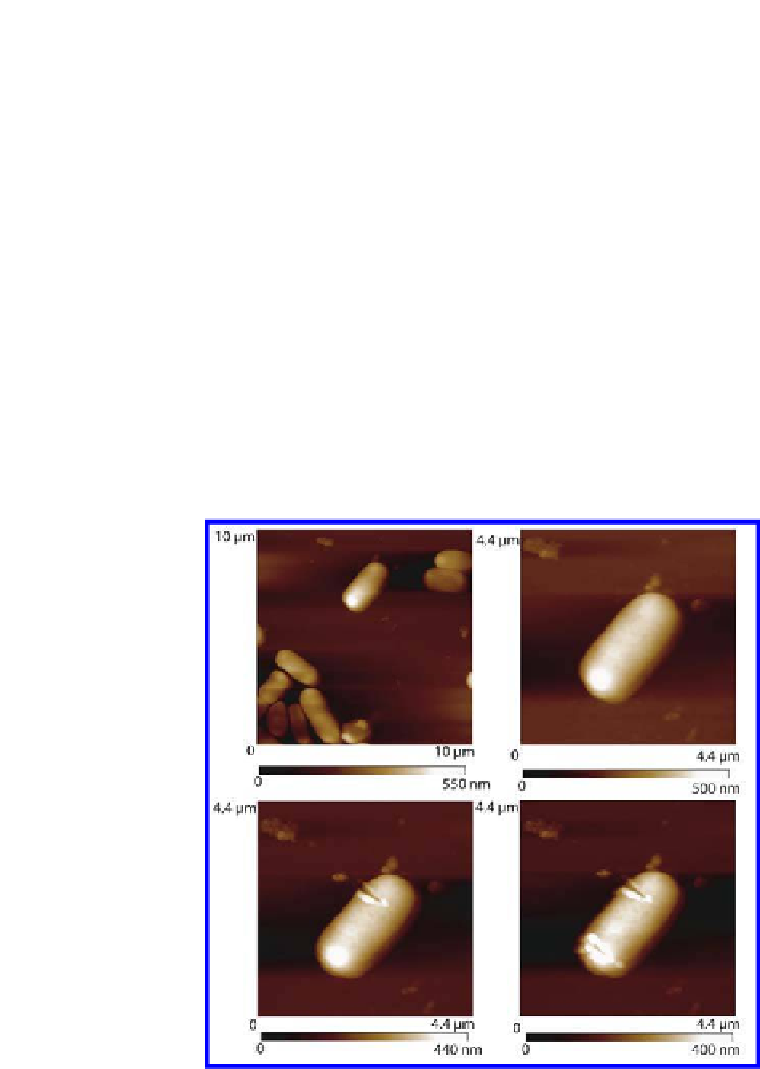Biology Reference
In-Depth Information
hand, the blunter silicon nitride tips may avoid puncturing fragile, tall samples
such as cells. To illustrate the importance of cantilever selection, intact
E. coli
were imaged using a silicon cantilever. According to the manufacturer, this
cantilever has an estimated spring constant of 0.6 nN/nm, and the cantilever
tip radius of curvature is said to be less than 10 nm. As shown in noncontact
MACmode™ imaging provides acceptable images of intact
E. coli
plane only) resulted in damage to the bacterial cell surface as indicated
one example of how cantilever selection may impact experimental results.
The other possibility is selecting cantilevers too soft for the condition of
the experiment. Speciically, it can be dificult to approach the surface in
air if cantilevers with very low spring constants are used. The dificulty
arises because softer cantilevers are more vulnerable to forces of adhesion
(capillary forces), which are always present when imaging in air. Careful
attention should be given to the selection of cantilever.
Z
(a)
(b)
(c)
(d)
Figure 3.5.
AFM provides the ability to both image and manipulate single microbes.
(a, b)
imaged in MACmode using a silicon cantilever. (c) Repeatedly contacting
the surface with a silicon tip in the same location scars the cell surface. (d) The same
cell after a second location was similarly treated. All images are topography images.
E. coli















Search WWH ::

Custom Search